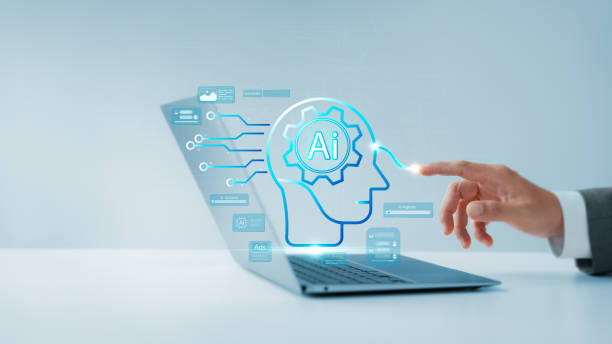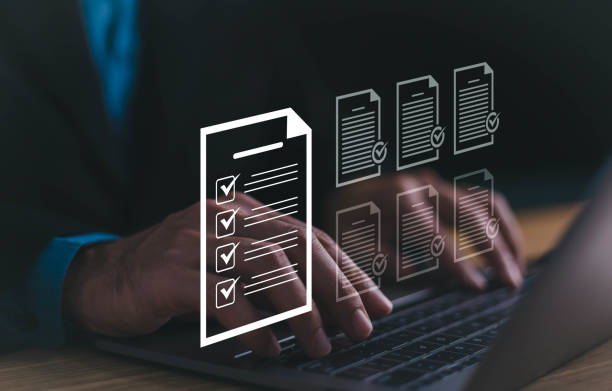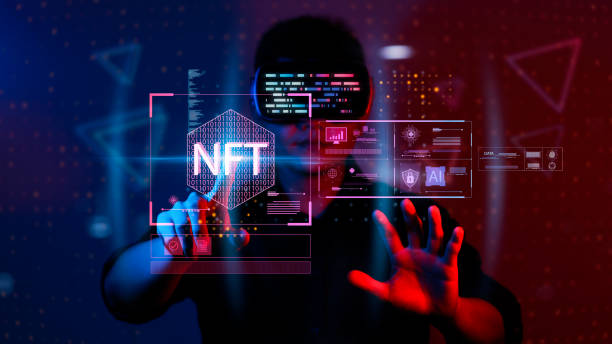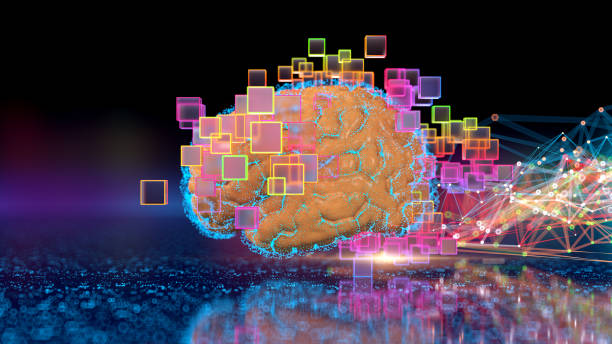What is an AI Robot? A Comprehensive and Simple Definition
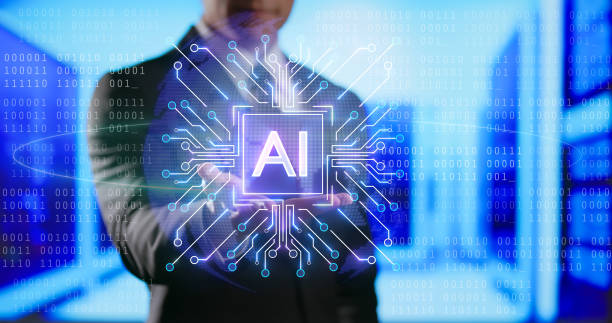
In today’s fast-paced world, the term #AI_robot has become one of the most widely used words.
But what exactly is an AI robot? In short, these systems are a combination of robotics and artificial intelligence that enable machines to perceive their environment, reason, learn, and perform specific tasks.
Unlike traditional industrial robots that only perform repetitive tasks based on fixed programming, an AI robot can adapt to new data and make independent decisions.
These capabilities stem from advanced machine learning algorithms, natural language processing, and machine vision, which allow them to exhibit human-like behaviors.
They can navigate complex environments, interact with humans, and even understand emotions.
These robots are not only capable of performing physical tasks but can also process and analyze information, and leverage their experiences to improve their future performance.
These features make them ideal for a wide range of applications, from industry and medicine to customer service and education.
Continuous development in the field of artificial intelligence and robotics is constantly pushing the boundaries of what an AI robot can do, showing us that a future full of intelligent machines lies ahead.
Is your current e-commerce website design causing you to lose customers and sales?
Rasaweb is your solution with modern and user-friendly e-commerce website designs!
✅ Significant increase in conversion rates and sales
✅ Strong branding and customer trust-building
⚡ Get a free e-commerce website design consultation from Rasaweb!
Key Components of an AI Robot from Hardware to Software
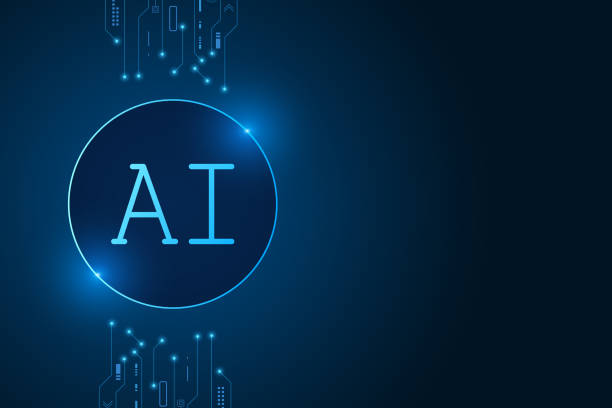
To understand how an #intelligent_robot works, it’s necessary to become familiar with its main components.
An AI robot consists of three essential parts: hardware, sensors, and software.
The hardware section includes the robot’s physical body, motors, arms, and movement mechanisms that enable it to operate in the real world.
This section acts like a human body and is responsible for executing commands received from other parts.
Sensors act like the robot’s eyes, ears, and touch; they collect information from the surrounding environment.
These sensors can include cameras (for machine vision), microphones (for natural language processing), touch sensors, distance sensors, and gyroscopes.
The data collected by the sensors is sent to the software section.
The heart of an AI robot is its software, which includes complex artificial intelligence and machine learning algorithms.
This software processes the data received from the sensors, makes decisions, and sends the necessary commands to the hardware.
Algorithms such as neural networks, deep learning, and reinforcement learning allow intelligent machines to learn from their experiences, recognize patterns, and adapt to dynamic environments.
For example, an AI robot can recognize faces using machine vision and understand and respond to voice commands through natural language processing.
This synergy between hardware, sensors, and software enables intelligent robotic systems to perform complex and smart tasks.
New Trends in AI Robot Development and Industrial Applications
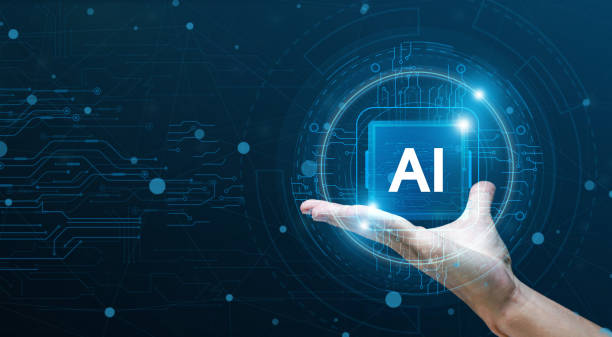
The development of #advanced_robotics and #artificial_intelligence has accelerated unprecedentedly in recent years, leading to new trends.
One of the most important of these trends is the greater integration of robots with the #Internet_of_Things (IoT) and Big Data, which enables AI robots to continuously collect, analyze data, and optimize their performance accordingly.
This has been particularly transformative in industrial applications.
In factories and production lines, AI robots are no longer just used for programmed repetitive tasks; they can make independent decisions, adapt to changes in the supply chain, and even help predict potential equipment failures.
For example, in the automotive industry, intelligent robotic systems can assemble parts with very high precision and simultaneously check quality.
This not only increases production speed but also minimizes errors, leading to higher quality products.
Furthermore, intelligent machines are being used in warehouses for inventory management and package sorting with unprecedented efficiency.
These advancements are moving towards the creation of “smart factories” where robots, humans, and other systems work together synergistically to maximize productivity.
These trends indicate a future where AI robots will play a pivotal role in increasing efficiency and innovation in the industrial sector.
Table 1: Key Applications of AI Robots in Various Industries
| Industry | Primary AI Robot Application | Key Benefits |
|---|---|---|
| Manufacturing and Assembly | Precise part assembly, automated quality control | Increased production speed, reduced errors, improved product quality |
| Logistics and Warehousing | Automated sorting and transportation of goods, inventory management | Warehouse space optimization, reduced operational costs, increased accuracy |
| Agriculture | Crop harvesting, plant health monitoring, precision spraying | Increased yields, reduced labor requirements, optimized resource utilization |
| Medicine and Healthcare | Assistance in surgery, rehabilitation, care for elderly patients | Increased surgical precision, improved patient quality of life, reduced burden on healthcare staff |
Is AI Robot a Threat to Human Jobs?

The question of whether #AI_robot poses a threat to #human_jobs is one of the most #controversial_and_debated topics in the field of the #future_of_work.
Concerns about the replacement of human labor by intelligent machines are completely understandable, as we are witnessing increasing automation across various industries.
In the short term, jobs involving repetitive and routine tasks may be more at risk of automation by AI robots.
For example, in production lines, warehousing, and even some administrative tasks, robots can work with greater speed and accuracy.
However, the prevailing view among experts is that AI robots do not necessarily replace humans, but rather change the nature of jobs.
Instead of completely eliminating jobs, robots can take over tedious, dangerous, or repetitive tasks, while humans focus on more complex, creative, and strategic tasks that require human skills such as creative problem-solving, emotional intelligence, and empathy.
For example, while an AI robot can assist in diagnosing diseases, the physician’s role in interacting with the patient, providing consultation, and making final decisions remains crucial.
Furthermore, the emergence of intelligent robots itself creates new jobs in the fields of developing, maintaining, training, and supervising these systems.
Therefore, instead of mere concern, we should focus on retraining and upskilling the workforce so they can collaborate with new technologies and benefit from the potential of AI robots to improve quality of life and increase productivity.
Are your online sales not as expected? With Rasaweb, permanently solve the problem of low sales and poor user experience!
✅ Increase visitor-to-customer conversion rates
✅ Create an enjoyable user experience and boost customer trust
⚡ Act now to receive a free consultation!
How Does AI Robot Help Us in Daily Life?
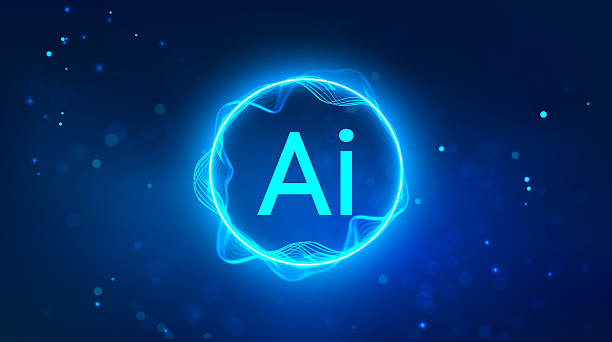
#AI_robot is not limited to factories and laboratories; it is increasingly present in our #daily_lives and helps us in various ways.
From smart home appliances to virtual personal assistants, the presence of AI robot is more tangible than ever.
One of the most common examples is robotic vacuum cleaners that automatically clean homes, allowing people more time for other activities.
Voice assistants like Siri, Alexa, and Google Assistant are also prominent examples of intelligent agents that can answer questions, play music, manage daily schedules, and even control smart home devices.
In healthcare, intelligent machines assist elderly individuals or patients in receiving medication reminders or even contacting emergency services if necessary.
Food and parcel delivery robots are also expanding in some cities, bringing efficiency and convenience to consumers.
Even in modern cars, advanced driver-assistance systems that utilize artificial intelligence enhance safety and improve the driving experience.
These intelligent robots make our lives easier, more efficient, and in some cases, safer.
With technological advancements, AI robots are expected to play a more prominent role in our personal lives and become an indispensable tool for improving quality of life.
Ethical and Legal Challenges in AI Robot Development
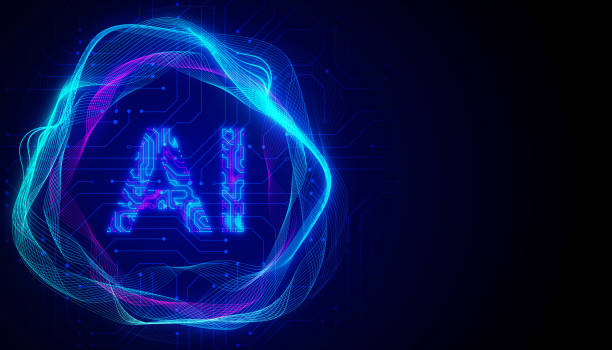
The rapid development of #AI_robot, alongside its numerous benefits, also brings complex #ethical and #legal_challenges that require serious attention.
One of the most important of these challenges is the issue of accountability.
If an AI robot operating autonomously makes a mistake or causes harm, who is responsible? Should the developer, manufacturer, or the robot itself be held accountable? These ambiguous questions highlight the need for new laws and regulations to define the legal frameworks for using intelligent machines.
Another challenge is maintaining #privacy and #data_security.
AI robots, especially those operating in domestic or public environments, access vast amounts of personal data.
The collection, storage, and use of this data must be carefully regulated to prevent misuse.
Furthermore, the issue of #algorithmic_bias is also relevant.
If the training data for an AI robot includes human biases, it can lead to unfair and discriminatory decisions by the robot.
This is particularly concerning in areas such as employment, lending, or judicial systems.
Other questions also arise, including the ethical standing of intelligent robots in society, the rights of robots (if they reach high levels of consciousness), and their impact on human values and social relations.
Addressing these challenges requires international cooperation, involving ethicists, legal experts, engineers, and policymakers to ensure that the development of AI robot progresses for the benefit of humanity.
The Future of AI Robots in Medicine and Healthcare

The field of #medicine and #healthcare is one of the most exciting yet crucial areas for the advancement of #AI_robot.
Intelligent robots have the potential to revolutionize healthcare, from diagnosing diseases to performing complex surgeries and providing rehabilitation care.
In diagnosis, AI robots can analyze vast amounts of medical data, including radiology images, patient records, and lab results, to identify patterns that might not be discernible to the human eye.
This can aid in the early and more accurate diagnosis of diseases such as cancer or rare conditions.
In surgery, robotic surgeons, with extremely high precision and less tremor than human hands, can perform complex operations, leading to reduced invasiveness, shorter recovery times, and better outcomes for patients.
Prominent examples include robotic systems for abdominal or orthopedic surgeries.
Furthermore, intelligent machines play a significant role in rehabilitation; they can help patients regain movement after injuries or strokes, or even serve as tools for delivering physiotherapy treatments at home.
Companion robots can also assist elderly individuals or those living alone, remotely monitoring their health status, reminding them of medications, and calling for help in emergencies.
The future of AI robot in medicine not only helps improve the quality of treatment but also expands access to healthcare, enabling healthcare systems to operate more efficiently and cost-effectively.
These advancements promise a revolution in how health and disease are managed worldwide.
Table 2: The Role of AI Robots in Transforming the Healthcare Sector
| Area | Role of AI Robot | Examples/Benefits |
|---|---|---|
| Disease Diagnosis | Analysis of medical data (images, records) | Early diagnosis of cancer, rare diseases with high accuracy |
| Surgery | Performing highly precise and minimally invasive surgical procedures | Da Vinci systems, reduced recovery time, increased patient safety |
| Rehabilitation | Assisting patients in regaining movement, physiotherapy | Exoskeleton robots, improved quality of life, targeted exercises |
| Elderly Care | Health monitoring, medication reminders, assistance with daily tasks | Companion robots, reduced burden on caregivers, increased independence for the elderly |
How an AI Robot is Trained and Learns
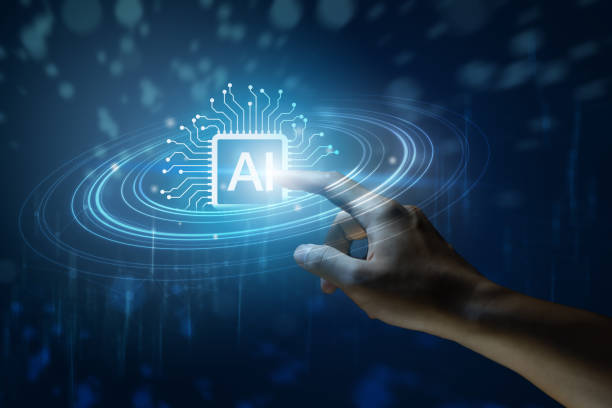
The process of #training and #learning for an #AI_robot is one of the most complex yet fascinating aspects of its development.
Unlike traditional programming where every instruction is explicitly defined, an AI robot is capable of learning from data and improving its performance.
This process often involves the use of #machine_learning, and particularly #deep_learning.
First, the robot is fed with a vast amount of data related to the task it is supposed to perform.
This data can include images, videos, texts, or sensory information.
For example, for an AI robot to be able to recognize objects, it must ‘see’ millions of images of different objects, with the target object labeled in each image.
Then, deep learning algorithms, such as Convolutional Neural Networks (CNN) for machine vision or Recurrent Neural Networks (RNN) for natural language processing, identify patterns and relationships within this data.
Over time, and with repeated training, the robot adjusts the internal weights of its neural network to make more accurate predictions or decisions.
Another important method is reinforcement learning, where the AI robot learns through trial and error.
The robot operates in a simulated or real environment and optimizes its strategies based on the feedback it receives (rewards for correct actions and penalties for errors).
This method allows intelligent robots to learn complex tasks such as navigating unknown environments or strategic games.
This ability of intelligent machines to learn from experience and data has transformed them into powerful and flexible tools that can adapt and improve their performance when faced with new conditions.
Losing potential customers due to an unprofessional website? Rasaweb is your answer! With our specialized corporate website design services:
✅ Increase visitor-to-customer conversion rates
✅ Create an enjoyable user experience and boost customer trust
⚡ Act now to receive a free consultation!
Comparing AI Robots with Human Intelligence and Current Limitations
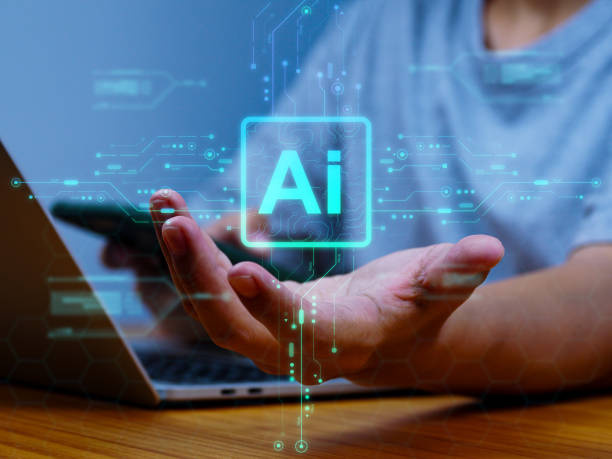
Comparing #AI_robot with #human_intelligence is a constant topic in discussions related to #artificial_general_intelligence.
While AI robots have demonstrated performance beyond humans in many specific tasks – such as complex calculations, processing vast amounts of data, or playing chess – they still face limitations in key aspects of human intelligence.
One of the most important of these limitations is the inability to grasp “Common Sense”.
Humans acquire a vast amount of information about how the world works from birth, which allows them to behave logically in new and unexpected situations.
Intelligent robots still lack this inherent ability for common-sense reasoning and often require programming or training for each specific scenario.
Furthermore, #creativity and #emotional_intelligence are two other areas where intelligent machines still face serious challenges.
Although some intelligent agents can produce music or paintings, these activities are often based on existing patterns and utilize predefined algorithms, rather than pure creativity and deep artistic understanding.
The ability to understand and respond to human emotions is also still very limited for AI robots, whereas this ability is crucial for social interactions and empathetic understanding.
Moreover, the ability of #transfer_learning, or using knowledge gained in one domain to solve problems in a completely different domain, is much stronger in humans than in intelligent robots.
However, research in these areas continues, and new boundaries in the capabilities of AI robots are being pushed every day, but achieving full human-level intelligence (AGI) remains a long-term goal.
The Exciting Future of AI Robots and 2050 Perspectives
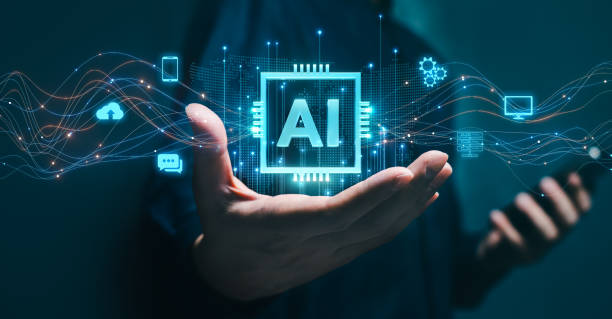
The outlook for the #future_of_technology, and especially #AI_robot, until #2050 seems very #exciting and #transformative.
It is predicted that by then, intelligent robots will become an inseparable part of daily life, industry, and even society, with capabilities that today we only see in science fiction movies.
One of the most important predictions is the expansion of #autonomous_robots in all domains.
These intelligent machines will be able to perform complex tasks in dynamic environments without human intervention.
From personal service robots in homes to worker robots in mines and farms, their presence will become pervasive.
In healthcare, AI robots are expected to achieve higher levels of collaboration with physicians, perhaps even capable of performing fully autonomous surgeries or developing new drugs at an unprecedented speed.
#Companion_robots with advanced emotional intelligence capabilities may become vital tools for caring for the elderly and those in need.
In industry, #smart_factories will reach a level of automation where production is fully automated and demand-driven, with minimal human intervention.
Furthermore, #explorer_robotics and AI robots will play a central role in space exploration, underwater discoveries, and even solving environmental challenges.
With advancements in Human-Robot Interaction (HRI), these intelligent agents will be able to communicate with humans more naturally and empathetically, appearing as colleagues, assistants, and even friends.
Of course, this future requires overcoming the ethical, legal, and security challenges currently at hand, but the potential of AI robots to improve human quality of life is immense.
Frequently Asked Questions
| No. | Question | Answer |
|---|---|---|
| 1 | What is an AI robot? | An AI robot is a machine capable of understanding, reasoning, learning, and problem-solving, and can perform complex tasks with relative autonomy. |
| 2 | What are the most important applications of AI robots? | Primary applications include industrial manufacturing, customer services (chatbots), medicine and surgery, autonomous transportation, space exploration, and military affairs. |
| 3 | What is the main difference between an AI robot and a regular robot? | A regular robot merely follows programmed instructions, whereas an AI robot can learn from data, make decisions, and adapt itself to new environments. |
| 4 | How do AI robots learn? | They learn through machine learning algorithms (such as deep learning, reinforcement learning) and by processing vast amounts of data, identifying patterns, and improving their performance. |
| 5 | Can AI robots have emotions? | Currently, AI robots do not possess real emotions in the human sense. They can imitate or detect emotions, but they do not understand or experience them. |
| 6 | What are the current limitations of AI robots? | Limitations include the need for large amounts of data, inability to grasp abstract concepts, lack of true creativity, ethical issues, and challenges in generalization to new environments. |
| 7 | What is the role of AI in the development of humanoid robots? | AI helps humanoid robots walk, maintain their balance, perceive their surroundings, interact with humans, and perform complex tasks. |
| 8 | How is the future of AI robots predicted? | It is predicted that AI robots will become smarter, more autonomous, and capable of performing more complex tasks in daily life and industry, with their interaction with humans increasing. |
| 9 | Can AI robots replace all human jobs? | It is unlikely that all human jobs will be replaced. Robots will take over many repetitive and dangerous tasks, but jobs requiring creativity, empathy, and ethical judgment will remain. |
| 10 | What ethical and social challenges arise with the proliferation of AI robots? | Challenges include issues related to privacy, data security, ethical decision-making by robots, impact on employment, and accountability in case of errors. |
And other advertising agency services by Rasa Web:
Smart Data Analysis: A professional solution for increasing sales with a focus on customizing user experience.
Smart SEO: An effective tool for increasing sales by utilizing real data.
Smart Custom Software: Professional optimization for analyzing customer behavior using attractive UI design.
Smart Sales Automation: A combination of creativity and technology to increase click-through rates via SEO-driven content strategy.
Smart Marketplace: A novel service for enhanced customer behavior analysis through Google Ads management.
And over hundreds of other services in internet advertising, advertising consultation, and organizational solutions.
Internet Advertising | Advertising Strategy | Advertorials
Resources
Digiato: AI Articles
Zoomit: Robotics News
ISNA: Artificial Intelligence
Fars News: Intelligent Robots
? With Rasaweb Afarin, transform your business in the digital world. By providing comprehensive digital marketing services, including custom website design, we help you shine in today’s competitive market and achieve your goals.
📍 Tehran, Mirdamad Street, next to Bank Markazi, Southern Kazeroon Alley, Ramin Alley, No. 6

